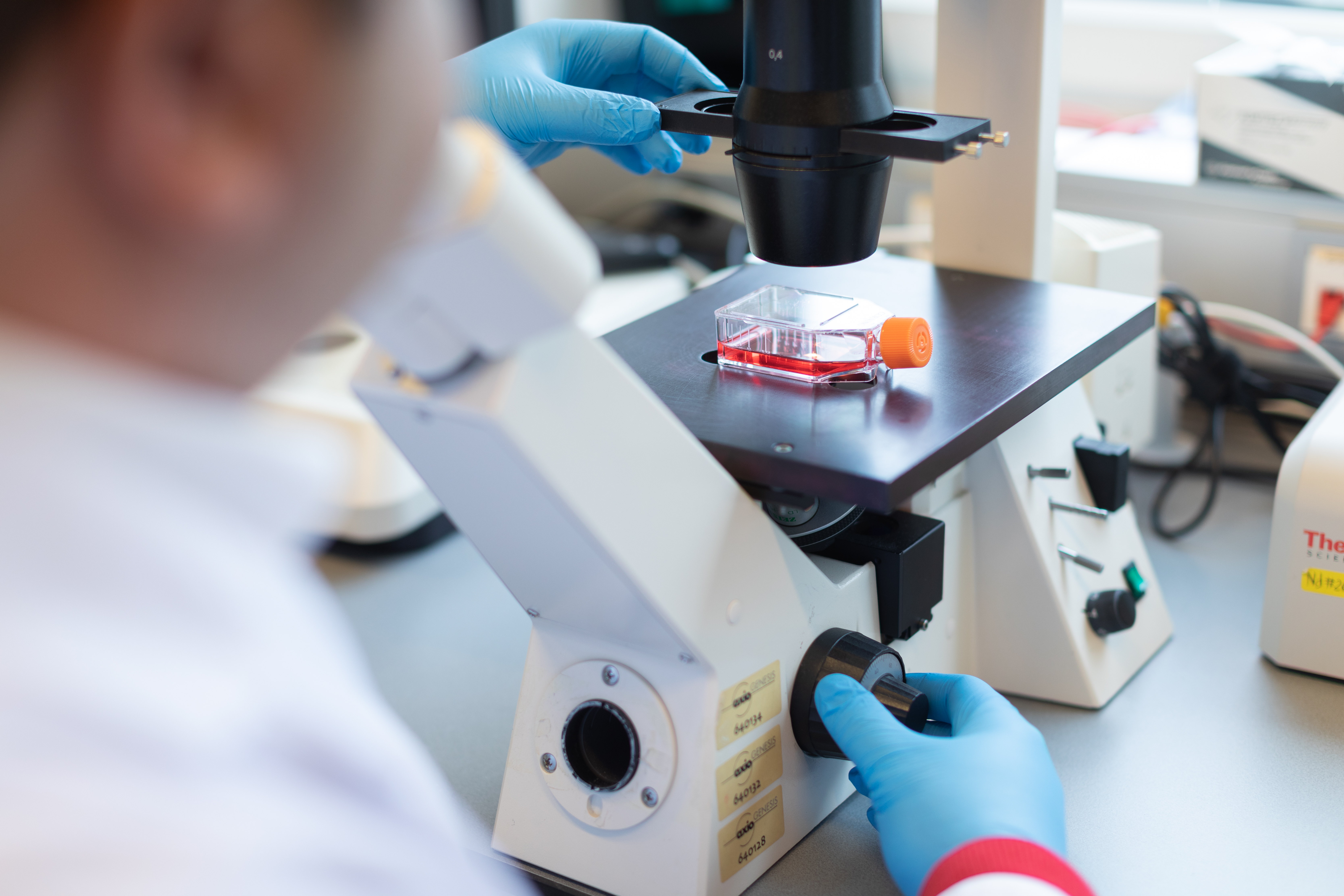Protein Aggregation Assays
Study your therapeutics' efficacy to combat Tau, α-Syn and TDP-43 aggregation
Start looking at your discovery programs from a new perspective with the Proteinopathy
Exploration Package
We have developed three robust assays that allow you to examine both early and late stages of aggregation and the impact on additional disease-linked phenotypes.
These assays are designed to catalyze the identification of drug candidates targeting Tau, a-Syn and/or TDP- 43 aggregation in neurons.

Purpose-built to increase confidence
This assay suite recapitulates the aggregation of Tau, α-Syn and TDP-43 in human iPSC-derived neurons and provides clinically relevant readouts to understand the impact of your compounds on both early and late stages of aggregation.
Designed to deliver robust and reproducible data
The three assays are robust and fully automated to accurately measure the impact of your drug candidates in early and late aggregation of Tau, α-Syn and TDP-43. The precision and robustness of the assays are strong enough to take action from the results (Z factor > 0.5 and %CV < 10%).
Formed to catalyze drug discovery
With the Proteinopathy Assays your results are ready in 6 weeks. The fully automated assays are amenable for 96 and 384 well plate formats. Get the report in your hands to make decisions, without delaying progress.
Benefits of Ncardia's Proteinopathy Assays
Increased Confidence
Human models and robust data
Amenable for HTS
Fully automated
Results in 6 Weeks
Three models screen in parallel
From Hit identification to Lead optimization, having a human-based automated assay with clinically relevant readouts puts you on an ideal position to make data-driven decisions and mitigate risks
Human-relevant Readouts for Proteinopathies
In vitro assessment of Tau aggregation
With a lentiviral transduction of Tau and chronic treatment with Tau PFFs of Ncardia’s human iPSC-derived cortical neurons we can recapitulate the increase in MC-1 and phospho-Tau, the initial stages of protein aggregation. Formation of insoluble Tau aggregates is also modeled as demonstrated by the results after treatment with methanol.
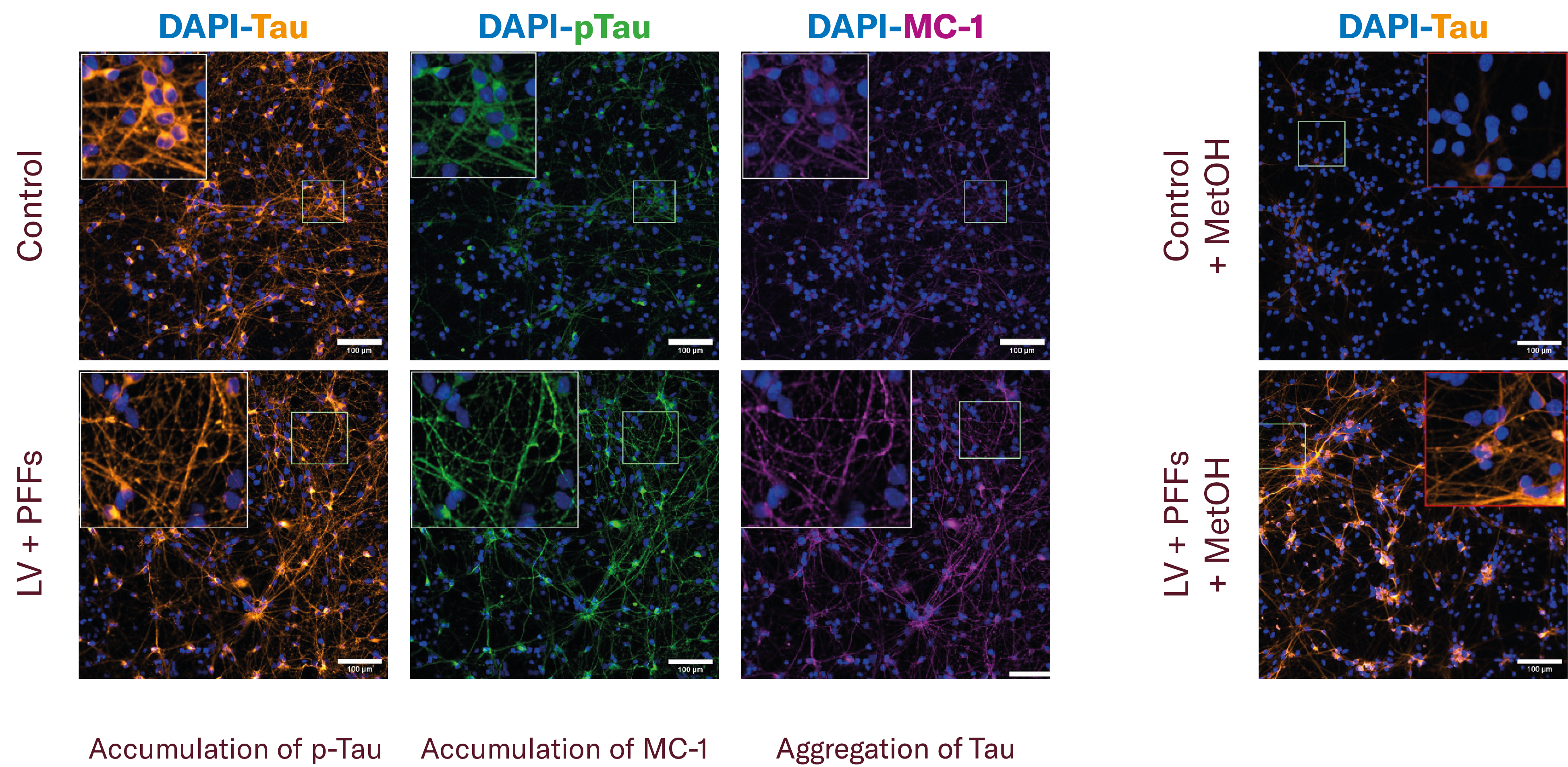 In vitro assessment of Tau aggregation in human iPSC-derived neurons using High Content Imaging
In vitro assessment of Tau aggregation in human iPSC-derived neurons using High Content Imaging
In vitro assessment of α-Synuclein aggregation
Acute treatment of Ncardia’s human iPSC-derived cortical neurons with PFFs induces a significant increase in the formation of puncta phospho- α-Syn when compared to untreated neurons. Chronic treatment can further increase the phenotype. To show the potential of the assay, disease neurons were treated with inhibitors of the protein degradation pathway and activators of lysosomal activity. Both treatments showed the expected phenotype rescue effect.
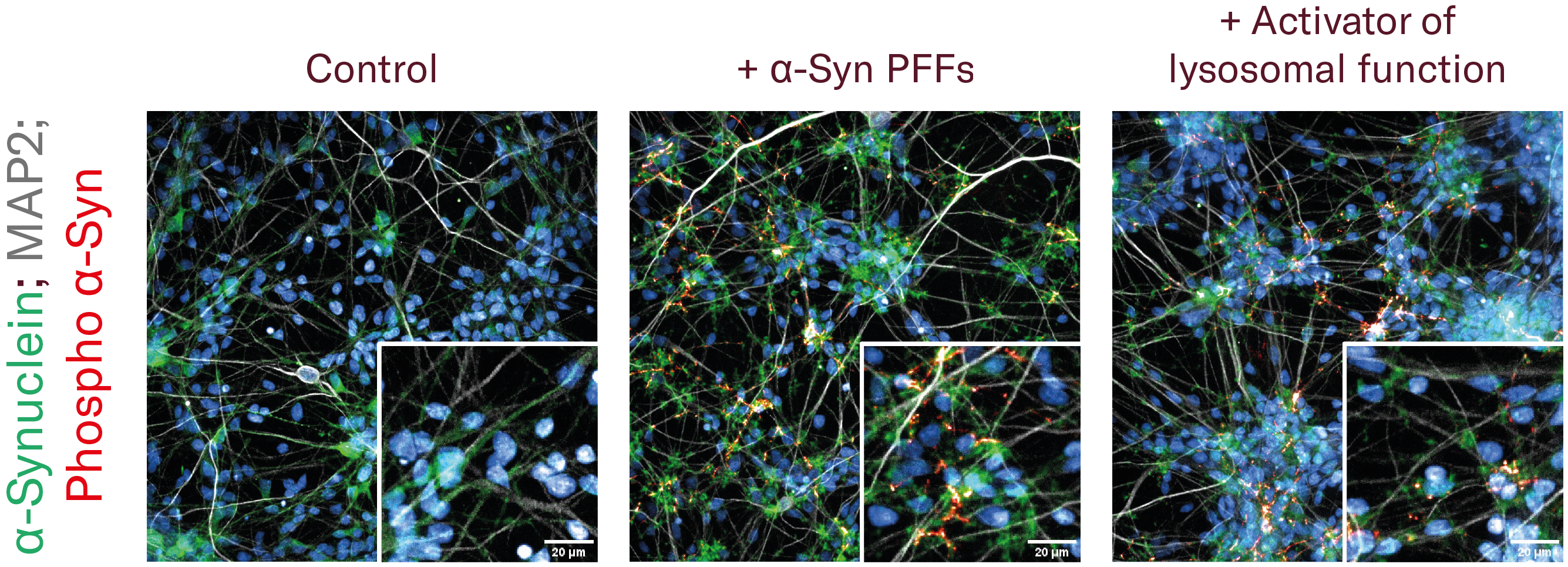 In vitro assessment of a-synuclein aggregation in human iPSC-derived neurons using high content imaging
In vitro assessment of a-synuclein aggregation in human iPSC-derived neurons using high content imaging
In vitro assessment of TDP-43 aggregation
We have developed a protocol for the maturation of human iPSC-derived motor neurons with both wild type and TDP-43 CRISPR engineered lines*. After maturation, mutant TDP-43 motor neurons show mis-localization and aggregation of TDP-43. Addition of a chemical stressor can further enhance the phenotype. Based on this model, we have optimized a HTRF assay to quantify the aggregation of TDP-43 as part of the Proteinopathy Exploration Package. Additional assays for TDP-43 mis-localization and STMM2 mis-splicing are also available at Ncardia.
* iCell(R) Motor Neurons, 01279 from FUJIFILM Cellular Dynamics, Inc
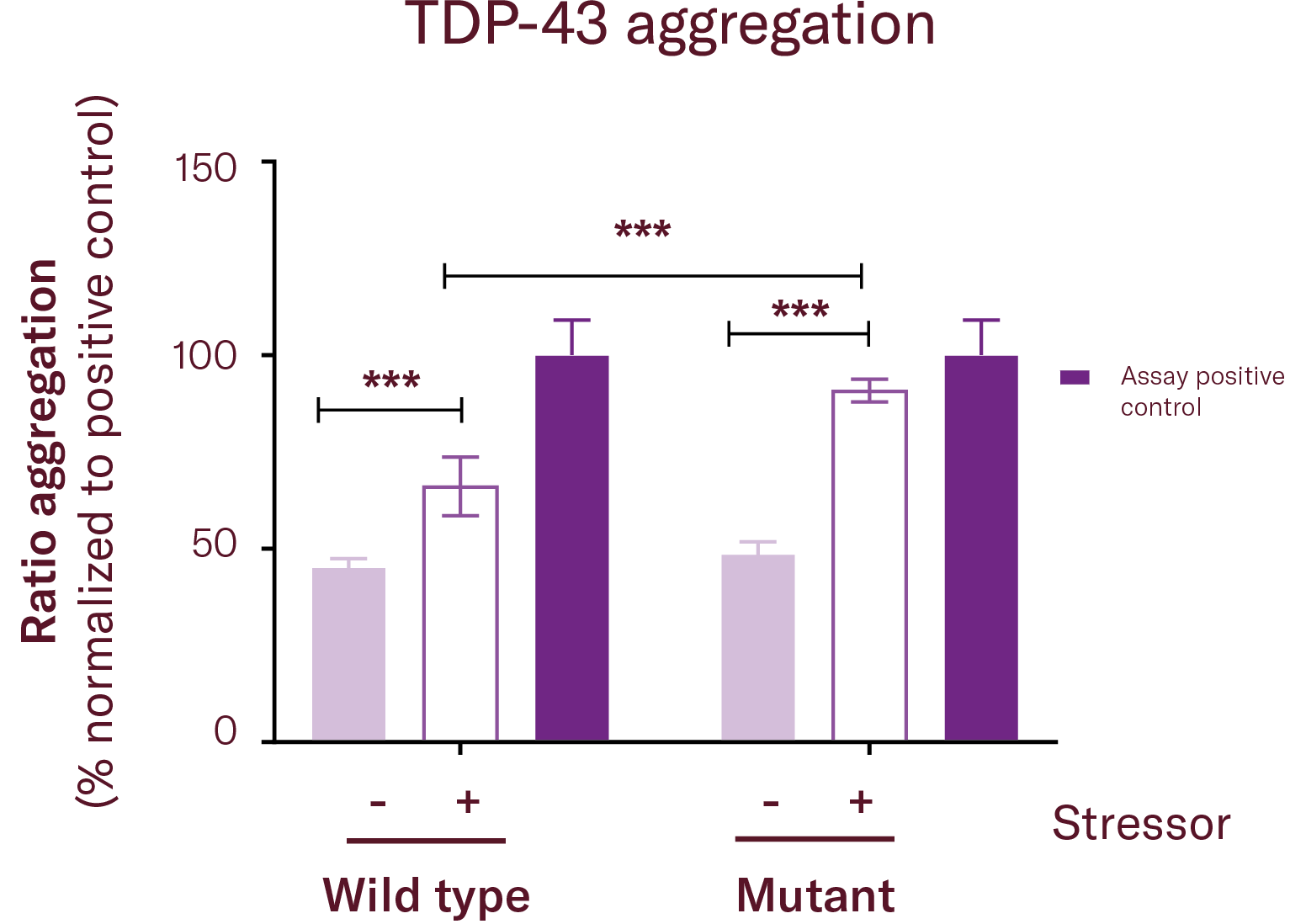 Quantification of the normalized TDP-43 aggregation in human iPSC-derived motor neurons by HTRF
Quantification of the normalized TDP-43 aggregation in human iPSC-derived motor neurons by HTRF
Want to know more?
Using the Proteinopathy Exploration Package and complementary Ncardia assays we can assess protein aggregation and other disease-linked phenotypes relevant to Alzheimer's, Parkinson's and Amyotrophic Lateral Sclerosis, among other neurodegenerative disorders.
Explore our Case Studies
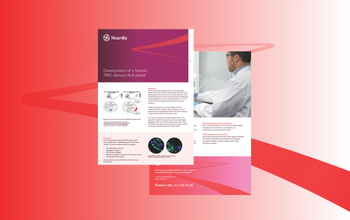

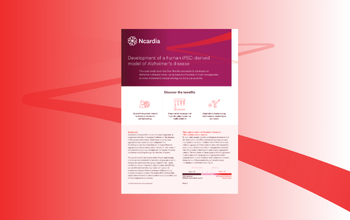
Discover more about our Solutions for Neurodegenerative Drug Discovery
Contact Us
If you're ready to start looking at your drug discovery programs from the unique perspective offered by the Proteinopathy Exploration Package, we'd welcome the opportunity to introduce you to our experts.


